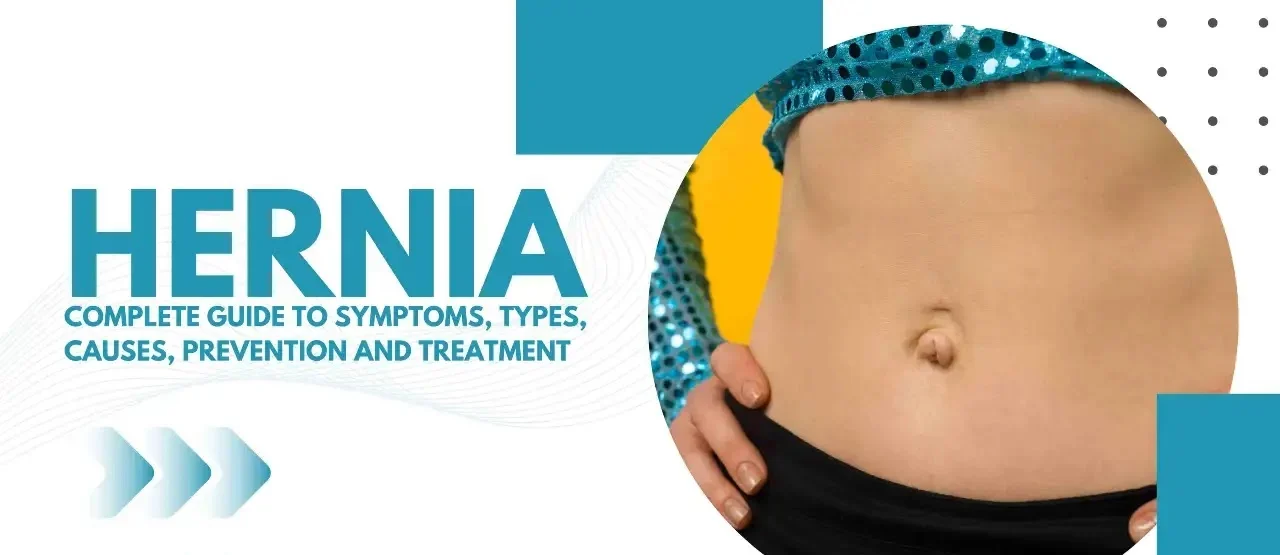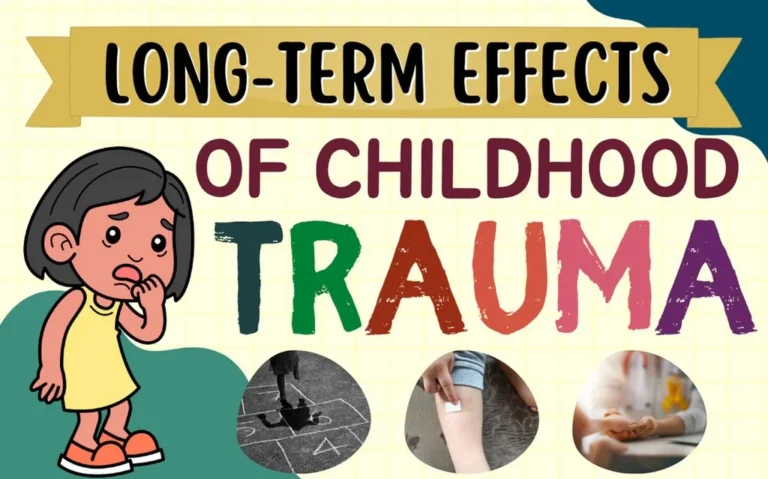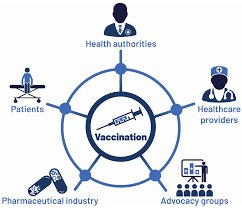An umbilical hernia is a common condition that affects both infants and adults, causing a visible bulge near the belly button. While often harmless, understanding this condition can help you make informed decisions about treatment and care. This comprehensive guide covers everything you need to know about umbilical hernias.
What is an Umbilical Hernia?
An umbilical hernia occurs when part of the intestine or fatty tissue pushes through a weak spot in the abdominal muscles near the navel (belly button). This creates a soft bulge or swelling that becomes more noticeable when coughing, crying, or straining.
The condition develops when the umbilical ring, which normally closes after birth, remains open or becomes weakened. Umbilical hernias are extremely common in newborns, affecting up to 20% of babies, and can also develop in adults due to increased abdominal pressure.
Common Symptoms and Warning Signs
Recognizing umbilical hernia symptoms helps determine when medical attention is needed:
Visible Signs:
- Soft bulge or swelling near the belly button
- Bulge becomes more prominent when crying, coughing, or straining
- Bulge may disappear when lying down or relaxed
- Discoloration around the navel area
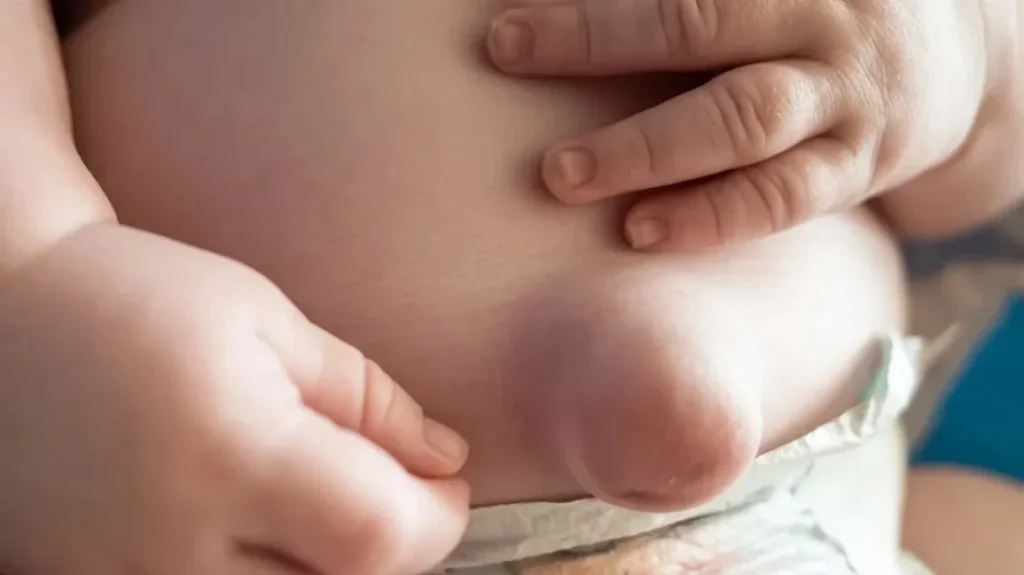
Physical Symptoms:
- Mild discomfort or pain around the navel
- Feeling of pressure in the abdominal area
- Nausea or vomiting (in complicated cases)
- Tenderness when touching the bulge
Emergency Warning Signs:
- Severe pain and tenderness
- Bulge becomes hard and cannot be pushed back in
- Nausea and vomiting
- Fever and signs of infection
Causes and Risk Factors
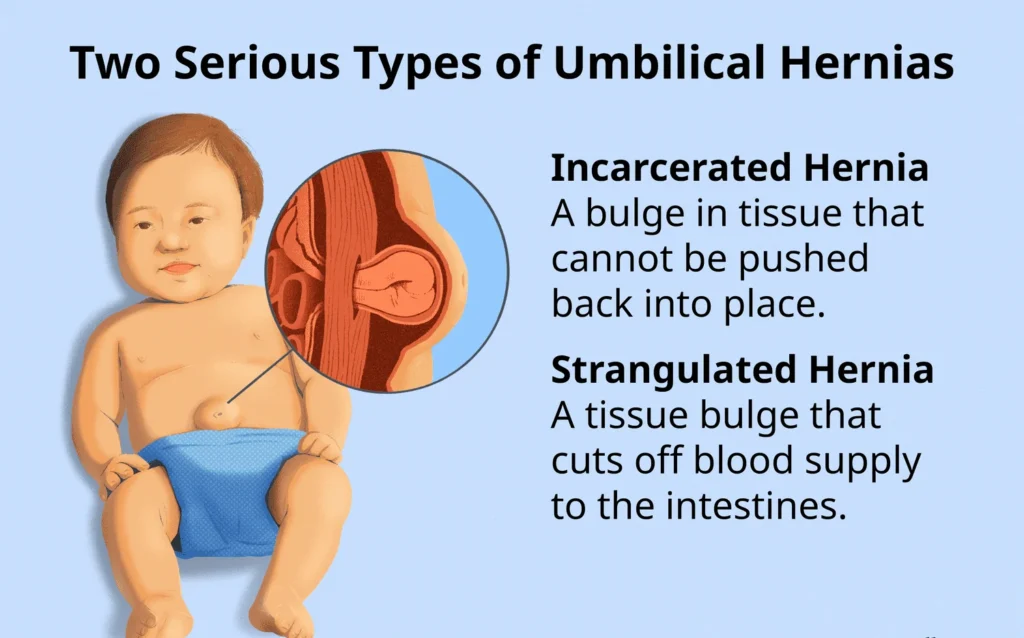
Understanding what causes umbilical hernias can help identify those at higher risk:
In Infants:
- Incomplete closure of the umbilical ring after birth
- Premature birth or low birth weight
- Genetic factors and family history
- Certain medical conditions affecting connective tissue
In Adults:
- Pregnancy and multiple pregnancies
- Obesity and rapid weight gain
- Persistent coughing or constipation
- Heavy lifting and increased abdominal pressure
- Previous abdominal surgery
- Fluid accumulation in the abdomen (ascites)
Treatment Options and Medical Care
Treatment for umbilical hernias varies depending on age, size, and symptoms:
Observation and Monitoring: Most umbilical hernias in infants close naturally by age 3-4 years. Regular monitoring by a pediatrician is typically sufficient for small, painless hernias.
Surgical Repair: Surgery may be recommended when:
- The hernia persists beyond age 4-5 in children
- The hernia is large (larger than 1.5 cm in diameter)
- The hernia becomes incarcerated or strangulated
- Adults experience pain or complications
Surgical Options:
- Open repair with mesh reinforcement
- Laparoscopic repair for complex cases
- Primary repair for smaller hernias
Recovery from umbilical hernia surgery typically takes 2-4 weeks, with most people returning to normal activities gradually.
Home Remedies and Self-Care
While home remedies cannot cure an umbilical hernia, certain measures can help manage symptoms and prevent complications:
Supportive Care:
- Gentle massage around the area (not directly on the bulge)
- Applying ice packs for pain relief
- Using supportive garments or hernia belts for comfort
- Maintaining proper posture to reduce abdominal pressure
Lifestyle Modifications:
- Avoiding heavy lifting and strenuous activities
- Managing cough and constipation promptly
- Eating smaller, frequent meals to reduce bloating
- Practicing gentle stretching and breathing exercises
Important Note: Never attempt to push a hernia back forcefully and seek immediate medical attention if the hernia becomes painful, hard, or discolored.
Prevention Strategies
While not all umbilical hernias can be prevented, certain strategies can reduce risk:
Weight Management:
- Maintain a healthy body weight
- Lose weight gradually if overweight
- Follow a balanced diet rich in fiber to prevent constipation
Physical Activity:
- Strengthen core muscles with appropriate exercises
- Avoid sudden, heavy lifting
- Use proper lifting techniques when necessary
- Engage in regular, moderate exercise
Health Management:
- Treat persistent coughs promptly
- Manage conditions that increase abdominal pressure
- Follow post-surgical care instructions carefully
- Wear supportive garments during pregnancy if recommended
When to Seek Medical Attention
Consult a healthcare provider if you notice:
- A new bulge near the belly button
- Increasing size of an existing hernia
- Pain or discomfort that interferes with daily activities
- Changes in the appearance or color of the hernia
- Signs of complications like severe pain or vomiting
For infants, regular pediatric check-ups will monitor the hernia’s progress and determine if intervention is needed.
Living with an Umbilical Hernia
Many people with umbilical hernias live normal, active lives with proper management:
- Follow your healthcare provider’s recommendations
- Avoid activities that worsen symptoms
- Maintain open communication with your medical team
- Learn to recognize warning signs of complications
- Consider surgical repair if recommended by your doctor
Frequently Asked Questions

Q: Do umbilical hernias always require surgery?
A: No, many umbilical hernias in infants resolve naturally by age 4-5. In adults, surgery is typically recommended for symptomatic hernias or those at risk of complications.
Q: Can an umbilical hernia go away on its own in adults?
A: Unlike in children, umbilical hernias in adults rarely resolve without surgical intervention. The weakened abdominal wall typically requires repair to prevent complications.
Q: Is it safe to exercise with an umbilical hernia?
A: Light exercise is usually safe, but avoid heavy lifting, intense abdominal exercises, or activities that increase abdominal pressure. Always consult your doctor before starting an exercise program.
Q: Can pregnancy cause an umbilical hernia?
A: Yes, pregnancy increases the risk of developing an umbilical hernia due to increased abdominal pressure and stretching of the abdominal muscles. Many pregnancy-related hernias appear during the second or third trimester.
Q: What happens if an umbilical hernia is left untreated?
A: While many remain stable, untreated hernias can potentially become incarcerated (trapped) or strangulated (blood supply cut off), which requires emergency surgery.
Q: How long does recovery take after umbilical hernia surgery?
A: Most people can return to light activities within 1-2 weeks and full activities within 4-6 weeks. Recovery time varies based on the surgical technique used and individual healing factors.
Conclusion
Umbilical hernias are common conditions that affect people of all ages. While many cases resolve naturally in children or remain manageable in adults, it’s important to monitor symptoms and seek appropriate medical care when needed. With proper diagnosis, treatment, and lifestyle modifications, most people with umbilical hernias can maintain their quality of life.
If you suspect you or your child has an umbilical hernia, consult with a healthcare provider for proper evaluation and personalized treatment recommendations. Early attention and appropriate care can prevent complications and ensure the best possible outcomes.
ALSO READ MORE HEALTH ARTICLES FROM CHIID HEALTH

